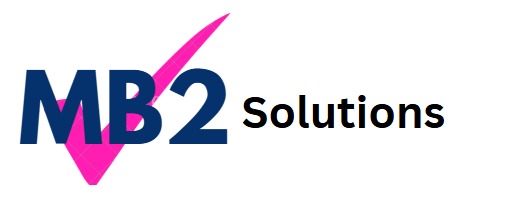
SAQA ID
78964

Credits
163
The purpose of this qualification is to build a foundational entry into the field of Computer Sciences and Information Technology, specifically into the field of Systems Support, covering basic knowledge needed for further study in the field of Systems Support at Higher Education Levels.
The qualification can be acquired in the traditional way of formal study as well as in the workplace, through learnerships. Acquiring the qualification through learnerships has the potential of addressing the problems of the past, where newly qualified people getting into the industry struggled to get employment, because they were required to have practical experience. The workplace experience can now be gained while acquiring the qualification through the various learnership schemes that are planning to use this qualification.
The Qualification consists of a Fundamental, a Core and an Elective Component.To be awarded the Qualification learners are required to obtain a minimum of 163 credits as detailed below.
1. Fundamental Component
The Fundamental Component consists of Unit Standards in
- Mathematical Literacy at Level 4 to the value of 16 credits
- Communication at Level 4 in a First South African Language to the value of 20 credits
- Communication in a Second South African Language at Level 3 to the value of 20 credits
It is compulsory therefore for learners to do Communication in two different South African languages, one at Level 4 and the other at Level 3
All Unit Standards in the Fundamental Component are compulsory.
2. Core Component
The Core Component consists of Unit Standards to the value of 77 credits all of which are compulsory.
3. Elective Component
The elective component consists of a number of specialisations. Learners are to choose a specialisation and complete unit standards totalling 30 credits from those listed for the specialisation.
Below is a list of the elective unit standards that are grouped per specialisation field. A minimum of 30 credits from any one specialisation field is needed to be recognised as a specialisation field. Depending on the credits achieved, more than one specialisation field might be printed on the qualification certification documentation.
Specialisation Field: Hardware and Infrastructure Support for Personal Computers.
- Demonstrate knowledge of principles of electronic logic for computing ; L4; 9 credits
- Describe Computer Cabling ; L4; 4 credits
- Demonstrate an Understanding of Hardware Components for Personal Computers or Hand-held Computers ; L4; 7 credits
- Assemble a Personal Computer or Hand-held Computer and peripherals from modules ; L4; 7 credits
- Repair Peripherals for a Personal Computer or Hand-held Computer to Module Level; L4; 9 credits
- Repair a Personal Computer or Hand-held Computer to module level ; L4; 12 credits
- Install a Personal Computer or Hand-held Computer and Peripherals ; L4; 7 credits
- Install system software and applications software for a Personal Computer or Hand-held Computer; L4; 5 credits
Specialisation Field: Data Communications & Networking Support.
- Demonstrate knowledge of principles of electronic logic for computing ; L4; 9 credits
- Demonstrate knowledge of basic concepts of telecommunications ; L2; 7 credits
- Describe Synchronous and Asynchronous Communication with Computers ; L3; 6 credits
- Describe data communications ; L3; 4 credits
- Demonstrate an understanding of computer network communication ; L4; 9 credInstall networked computer application software ; L4; 5 credits
- Install a Local Area Network ; L4; 10 credits
- Apply the Principles of Supporting Users of a Local Area Network ; L4; 7 credits
Specialisation Field: Hardware and Infrastructure Support for Office Products.
- Demonstrate knowledge of principles of electronic logic for computing ; L4; 9 credits
- Describe and install scanning systems ; L4; 3 credits
- Describe and install photocopier machines. ; L4; 3 credits
- Describe and install a facsimile machine. ; L4; 2 credits
- Describe and install computer printers. ; L4; 2 credits
- Describe and install colour copiers/printers ; L4; 4 credits
- Describe and install high-volume photocopier machines. ; L4; 4 credits
Learners choosing this specialisation are to choose additional unit standards from the other specialisations to the value at least 3 credits.
The minimum entry requirement for this qualification is:
- NQF Level 4 qualification.

Pricing

Delivery Mode
Hybrid Full Time/Online

Campus Location
Dynamic
What will a qualified learner be able to do?
- Communicate effectively with fellow IT staff & users of information systems.
- Demonstrate an understanding of different types of computer systems and the use of computer technology in business.
- Demonstrate an understanding of problem solving techniques, and how to apply them in a technical environment.
- Demonstrate an understanding of Computer Technology Principles.
- Select and use materials and equipment safely for technological purposes.
- Work effectively as a team member within a support team.
- Carry out, under supervision, a small size task to demonstrate knowledge of techniques & skills needed in one or more of the following areas of majoring/specialisation:
- Hardware and Infrastructure Support for Personal Computers
- Hardware and Infrastructure Support for Office Products
- Data Communications and Network Support
Assessment Criteria for Exit Level Outcomes
In particular, assessors should check that the learner is able to demonstrate an ability to consider a range of options and make decisions, meeting the following criteria:
- Effective Communication is demonstrated with fellow IT staff & with users of information systems, in the form of written and verbal communication.
- An understanding of different types of computer systems and the use of computer technology in business is demonstrated, being able to describe the different computers systems and associated hardware and network configurations and investigate (sometimes under supervision) its use within organisations.
- The ability to identify different problem solving techniques, and when and how to apply them, is demonstrated.
- A fundamental understanding of Computer Technology Principles are demonstrated by explaining computer architecture, networking and operating systems concepts, as well as different data storage methods.
- An understanding of use of equipment safely for technological purposes is demonstrated, being able to install, maintain and upgrade hardware or infrastructure in areas of specialisation, according to customers' Service Level Agreements, manufacturers' recommendations and safety regulations.
- Working effectively as a team member within a support environment, taking part in team activities and understanding different roles within different support teams.
- The knowledge of the techniques & skills needed in one or more areas of specialisation is demonstrated by carrying out a small size task that is covering the assessment criteria explained in the unit standards selected in the specialising area being assessed in.
In addition to the above, unit standards will be utilised to provide depth of specification of the outcomes ranges and the assessment criteria and processes.
Furthermore, the assessment process should also cover the following generic components:
- Measure the quality of the observed practical performance as well as the theory and underpinning knowledge behind it;
- Use methods that are varied to allow the learner to display thinking and decision making in the demonstration of practical performance;
- Maintain a balance between practical performance and theoretical assessment methods to ensure each is measured in accordance with the level of the qualification; and
- Ensure that the relationship between practical and theoretical is not fixed but varies according to the outcomes being assessed.
Integrated Assessment
Development of the competencies may be through a combination of formal and informal learning, self-learning, training programmes and work-based application.
The practical, applied, foundational and reflexive competencies demonstrated for the group of assessment criteria in this qualification, must prove that the whole competence is more than the sum of the parts of the competencies.
Providers should conduct diagnostic and formative assessment. Formative, continuous and diagnostic assessments should also take place in the work place, if applicable. The learner should also be able to assess him or herself and determine readiness for a summative assessment against this qualification.
During integrated assessments the assessor should make use of formative and summative assessment methods and should assess combinations of practical, applied, foundational and reflexive competencies. Input to completing the Integrated Assessment typically makes use of combinations of the following assessment methods:
- Time-constrained written examinations
- Coursework Evaluations
- Continuous Evaluation
- Practical Evaluation
- Evaluation of Portfolios of Evidence
Articulation options
Upon successful completion of the qualification, the learner will understand the role of a Systems Support Technician and be able to competently carry out the exit level outcomes of the qualification, in a business environment. The purpose of this qualification is stated as being a foundational qualification at the Further Education and Training band (level 4), allowing for further study in Information Technology and related fields at Higher Education levels. This will allow the qualified learner to progress to further qualifications either in Systems Support or other IT domains, or in other related industries where IT is a key component.
In particular, this qualification has been designed to allow entry into either the National Certificates in Systems Support at NQF level 5 or the National Certificate in Systems Development at NQF level 5, but can also be used as foundational to other IT qualifications that will be defined in future.

